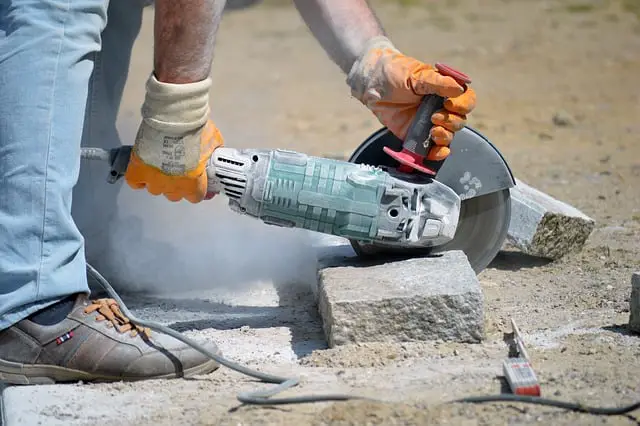Power tools play a crucial role in various construction, woodworking, and DIY projects. While they offer convenience and efficiency, it’s important to prioritize safety when using them.
One common question that arises is whether it’s safe to use power tools in the rain. The combination of electricity and water can lead to electrical hazards, corrosion, accidents, and damage to both the tools and the user.
In this article, we will explore the potential risks and consequences of operating power tools in wet conditions, as well as provide practical safety tips for the everyday user.
Understanding Power Tools
Power tools encompass a wide range of equipment, including drills, saws, sanders, and more. These tools are designed to provide the necessary power and precision to get the job done.
However, they rely on electricity and have specific operating requirements. Familiarizing yourself with the different types of power tools and understanding their components and electrical safety measures is crucial for safe operation.
Effects of Water on Power Tools
Water and electricity are a dangerous combination, and using power tools in the rain can lead to hazardous situations.
When exposed to moisture, power tools can experience electrical malfunctions and even pose a risk of electrocution.
Additionally, water can cause corrosion and damage to the internal components of the tools, compromising their functionality and lifespan.
The presence of water also increases the likelihood of accidents due to slippery surfaces and reduced grip on the tools.
Read also my article: Rain or Shine: Which Power Tools You Can Use in Rain.
Safety Precautions for Using Power Tools in the Rain
To mitigate the risks associated with using power tools in wet conditions, certain safety precautions should be followed. These include:
- General guidelines: Avoid using power tools in the rain whenever possible. If it’s necessary, take extra precautions to ensure safety.
- Selecting weather-resistant power tools: Look for power tools that are specifically designed for outdoor use or are labeled as “weather-resistant” or “waterproof.”
- Personal protective equipment (PPE): Wear appropriate PPE, such as rubber gloves, non-slip boots, and waterproof clothing, to protect yourself from electrical shock and slips.
- Ground fault circuit interrupters (GFCIs): Use GFCIs to provide an additional layer of electrical protection by automatically shutting off the power in case of a ground fault.
- Proper storage and drying: Store power tools in dry and secure locations when not in use, and ensure they are completely dry before operating them.
Potential Consequences of Using Power Tools in the Rain
Ignoring safety precautions and using power tools in wet conditions can have severe consequences. These include:
- Personal injury risks: Increased chances of slips, falls, and accidental contact with live electricity, leading to injuries ranging from minor cuts and bruises to severe electric shocks.
- Electrical shocks and electrocution: Water is a conductor of electricity, and using power tools in the rain heightens the risk of electrical shocks or even fatal electrocution.
- Fire hazards: Water can cause short circuits and sparks, potentially resulting in fires or explosions.
- Damage to power tools: Moisture can corrode internal components, rendering the tools ineffective and reducing their lifespan. This can result in costly repairs or the need for replacement.
- Voiding manufacturer warranties: Most power tool warranties explicitly state that any damage caused by misuse, including use in wet conditions, voids the warranty, leaving users responsible for repair or replacement costs.
Alternatives to Using Power Tools in the Rain
When faced with wet weather conditions, it’s advisable to consider alternatives to using power tools outdoors. These options include:
- Indoor workspaces or covered areas: Utilize indoor spaces or covered areas that provide a dry and safe environment for power tool operation.
- Delaying the task until weather conditions improve: Monitor weather forecasts and plan your projects accordingly. If possible, wait for dry conditions before using power tools.
- Hiring professionals for specific tasks: For complex projects or tasks requiring specialized equipment, consider hiring professionals who have the expertise and proper tools to work safely in various weather conditions.
Conclusion
While power tools offer convenience and efficiency, using them in the rain poses significant risks.
It’s crucial to prioritize safety by following general guidelines, selecting weather-resistant tools, wearing appropriate PPE, and using GFCIs. By understanding the potential consequences and exploring alternative options, users can ensure a safe and productive working environment. Remember, safety should always be the top priority when using power tools.
Want to learn more about electricity? Check my YouTube channel!
Are You An Electrical Engineer or Electrician?
Install my Free On Google Play Now! It’s 100% Free
The staff I recommend (Amazon Affiliate Links to products I believe are high quality):
- Economy 120 Volt/60Hz AC Power Source – Step-Down Voltage & Frequency Converters 1800W
- UNI-T Digital Multimeter Tester UT139C
- 50-Amp Extension Cord for RV “100ft”
- Voltage Stabilizer 110/220v
- Hair Dryer “best selling“
- TOSHIBA EM131A5C-BS Countertop Microwave Ovens
Disclaimer: This contains affiliate links to Amazon products. I may earn a commission for purchases made through these links.


